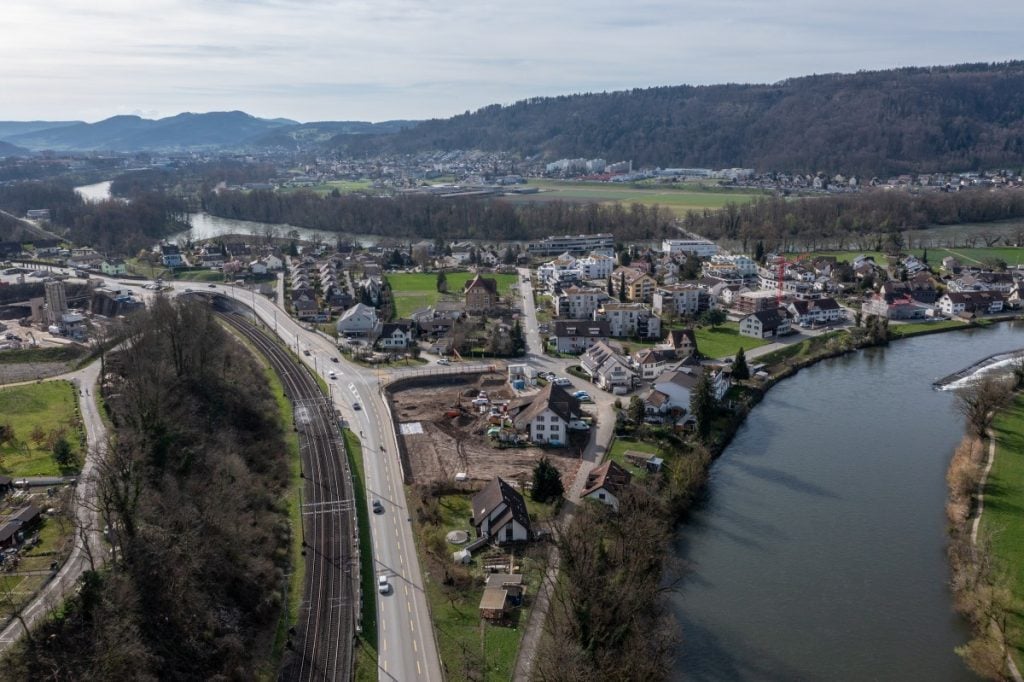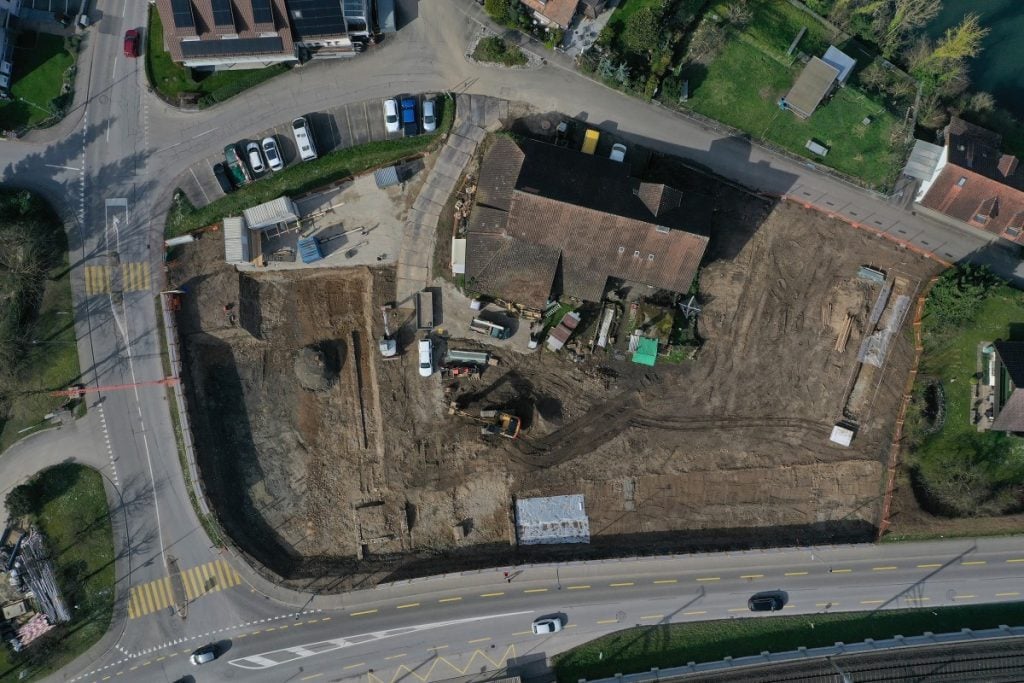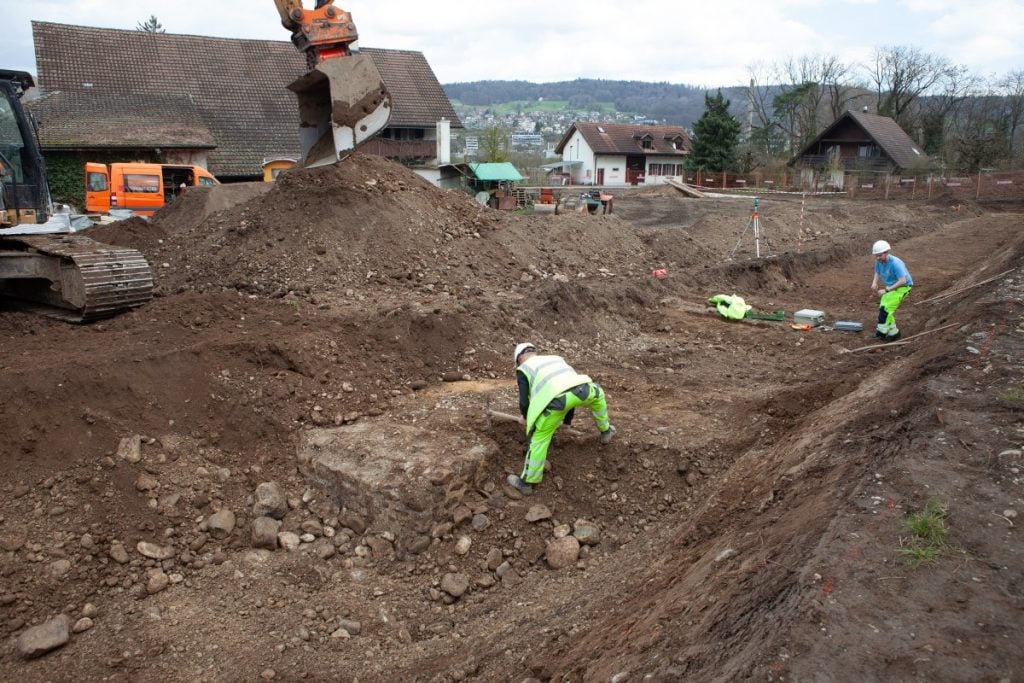Archaeology & History
Swiss Archaeologists Find Roman Ruins at Proposed Residential Development
The site is set to be excavated until mid-2025.

Roman garrisons abroad specified that civilian settlements were to be built “extra leugam”, literally beyond a league, a unit of distance measuring 1.4 miles. So it proved in Gebenstorf, northern Switzerland, where archeologists have discovered evidence of a large settlement precisely one league from Vindonissa, a well-excavated legion camp.
The site was set to be developed into a residential facility including an underground carpark with archeologists invited in early April to conduct a quick survey. Investigations will now be considerably extended given the wealth of well-preserved buildings that have already been unearthed across the 35,000-square-foot location.

An aerial view of the Roman site in northern Switzerland. Photo: Kanton Aargau.
So far, preliminary work has uncovered the foundations of Roman buildings and walls and small artifacts. It is hoped excavations will shed light on the relationship between Vindonissa and the Gebenstorf settlement, as well as Roman military camps and their civilian neighbors more broadly, a factor that archeologists stated was of interest to “international research”.
“From a scientific point of view, the complex of this planned settlement is of great importance, as here, in a largely undisturbed area, essential statements can be made,” Canton of Aargau’s Department of Education, Culture and Sport said in a statement.

A large wall was discovered during initial excavations. Photo: Kanton Aargau.
The excavation is set to take place in two stages. The first will run through November 2024 and will focus on the western portion of the site. The second will run from March to May 2025 and will focus on the perimeter. By mid-2025, the land will be available for redevelopment.
Since the 17th century, this area in northern Switzerland has produced signs of Roman settlement. Immediately west of the current plot, there is a known cemetery for Roman soldiers and back in 2019 archeologists from the Canton of Aargau documented a stone building complete with buttresses and pillars, indicating a granary or warehouse.

View of stone foundations uncovered during the 2019/2020 excavations. Photo: Kanton Aargau.
Sustained Roman presence in the Swiss region, which today stands 10 miles from the German border, dates back to roughly the first century B.C.E. In 15 C.E. the legion camp at Vindonissa was encircled with a protective earthen wall and gradually developed to include an amphitheater and baths.
“The excavation’s results will be conveyed during further developments,” the Canton of Aargau said. “We look forward to the coming weeks.”





